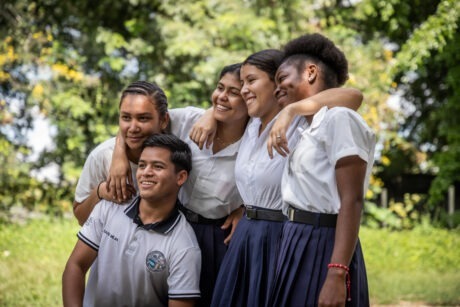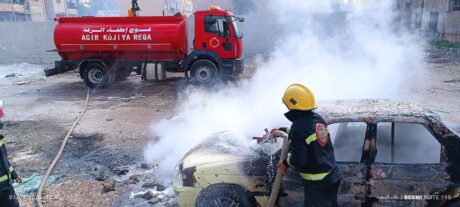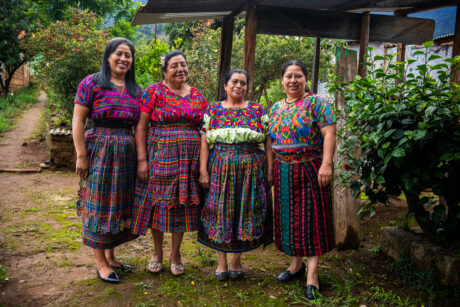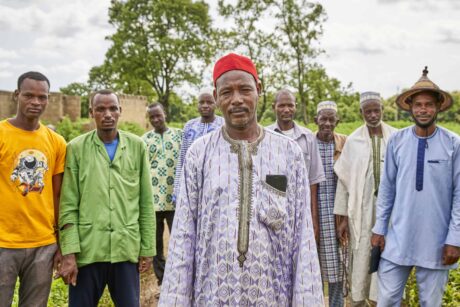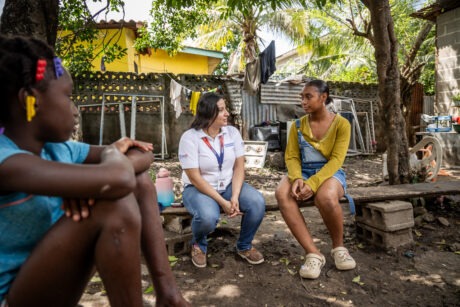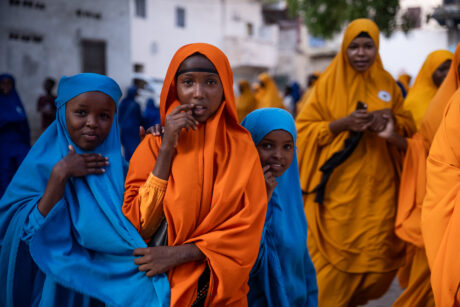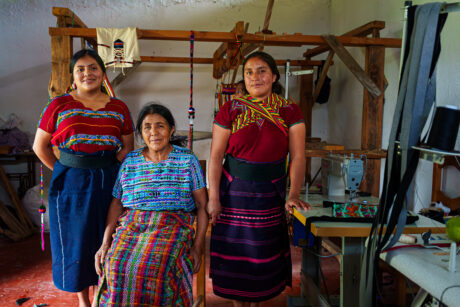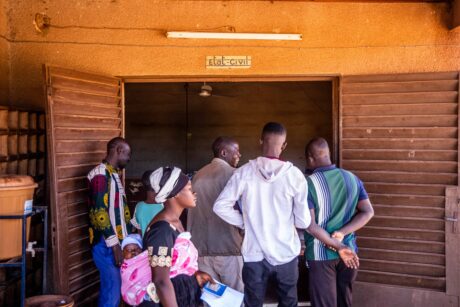Área de foco
Prevenção e Estabilização de Conflitos
Conflito, crises políticas, A recuperação democrática e o extremismo violento estão entre os muitos desafios complexos que impedem a paz.
Colocando as comunidades no centro dos esforços de construção da paz, Estratégias ágeis da Creative, desenvolvido ao longo de quatro décadas em ambientes desafiadores, Concentre -se na construção de liderança local, Elevando as vozes da comunidade, Estabelecer confiança entre os residentes e canalizar os recursos como comunidades abordam as causas subjacentes de conflito e buscam mudanças positivas.
A abordagem de prevenção de conflitos e construção de conflitos da Creative centra -se em uma sólida compreensão da dinâmica do sistema de conflitos combinada com LED localmente, intervenções coordenadas e sensíveis a conflitos. Trabalhamos com as partes interessadas locais para determinar pontos de entrada viáveis e transformadores para reduzir a violência e resolver conflitos, considerando a interdependência e a interação de fatores que levam a conflitos. Facilita criativa fortalecida as relações entre parceiros usando técnicas como engajamentos de pessoas para pessoas, mediação e investigação apreciativa.
Através de três décadas abordando alguns dos mais complexos desafios de política externa e de segurança nacional do mundo, A Creative aprimorou sua abordagem para fazer parceria com as iniciativas do Escritório de Transição da USAID (FEITO) para entregar adaptativo, Programação tecnicamente profunda de transição que apóia a promoção de normas democráticas e aborda queixas de longa data. Vamos adaptar e aplicar a abordagem comprovada do Creative - informado localmente, politicamente consciente, Inovador - com base em liderança eficaz, Agilidade programática e operacional, responsabilidade, Propriedade local e postura de segurança e risco informados para maximizar os resultados em uma dinâmica rápida em mudança e complexa. O Creative ajudou a impedir a traseira democrática e implementos de programação politicamente informada em sintonia com os EUA. Prioridades do governo e contexto do país para sustentar pontos positivos para a reforma democrática.
Aplicando uma abordagem holística da política a pessoa, Trabalhos criativos com várias partes interessadas para vincular Local, Esforços nacionais e regionais focados no aprendizado e coordenação coletiva para prevenir e combater o extremismo violento (Pve/cve). Creative ajudou os governos a criar uma estrutura de orientação CVE regional, um currículo regional de treinamento PVE/CVE, e estratégias nacionais de CVE e planos de ação, Organizar o desenvolvimento da capacidade participativa e sessões de compartilhamento de conhecimento para melhorar a compreensão do PVE/CVE entre os funcionários do governo, Organizações da sociedade civil e jornalistas.
A educação desempenha um papel vital na reconstrução de conflitos e nas comunidades afetadas pela crise e na incutida resiliência para um futuro pacífico. O Creative avalia rapidamente as necessidades exclusivas dos sistemas educacionais nessas situações e colabora com as comunidades, Governos e o setor privado para desenvolver estratégias sustentáveis que fornecem acesso à educação de qualidade em ambientes de aprendizado seguro.
Veja nossos outros trabalho educacional.
O conflito se manifesta em muitas linhas de falha na sociedade, e o trabalho da Creative na construção da paz consciente e holisticamente une indivíduos e grupos como membros de sua comunidade. Apoiamos grupos locais em todos os segmentos da sociedade para construir confiança, focando em grupos com conflito em seu passado ou presente. Nosso trabalho sobre coesão social permite que os indivíduos Construir resiliência ao abordar o conflito intracomunitário e colaborar para alcançar objetivos mútuos. Trabalhamos entre atores em comunidades e entidades, incluindo o fortalecimento das autoridades e instituições para permitir a colaboração e oferecer oportunidades de participação cívica e busca coletiva de paz e segurança econômica.
Trabalhando em áreas ainda em, ou emergindo recentemente de combate ativo, O Creative entrega estratégico, Atividades de estabilização responsivas e sensíveis a conflitos. Onde a estabilização rápida é necessária, Ajudamos os atores locais a fornecer alta visibilidade, Projetos de impacto rápido que respondem às necessidades dos cidadãos, cumprir os objetivos de nosso cliente e são flexíveis o suficiente para evoluir, dada a situação no terreno. Por todas as atividades, Incentivamos o engajamento nos princípios de boa governança, Como as áreas não podem se estabilizar sem essas fundações.
Concentrando -se em pontos de acesso da comunidade que enfrentam mais violência, influência de gangues, ou crime, Creative ajudou os cidadãos a criar estratégias de prevenção de violência no nível da comunidade, fortalecer a governança local para reduzir o crime e trabalhar com as partes interessadas locais de confiança para abordar as causas principais de diferentes formas de violência (por exemplo, doméstico, homicídio, crime de rua). Nossa saúde pública, abordagem baseada em lugares da prevenção de crimes e violência identifica individual, interpessoal, comunidade, e fatores estruturais que contribuem para o crime e a violência. A abordagem do Creative permite o design de integrado, Abordagens de longo prazo que aproveitam os ativos locais identificados para responder a causas e drivers raiz. Um líder de pensamento reconhecido em cidadão- e programação de segurança humana, Creative está na vanguarda do crime inovador- e metodologias de prevenção à violência para a USAID, Incluindo em Honduras, El Salvador e o Caribe.
